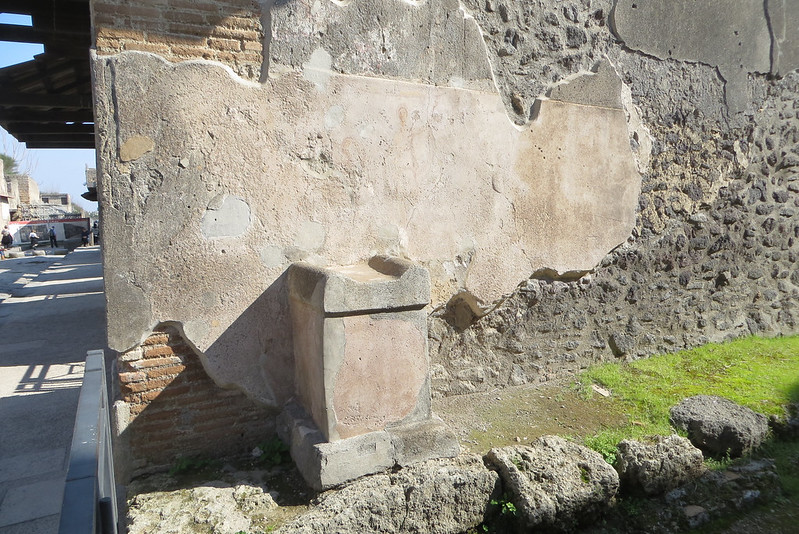In Stone and Story
Early Christianity in the Roman World
Materials available for professors by request only
Chapter 7: Genius & Emperor
Photo Gallery
Photos 7.1 and 7.2
The conviction that spiritual forces are involved in any configuration of power is evidenced in the many neighborhood shrines that are found in Pompeii — where residents can enhance the spirit of the neighborhood through sacrifices. When archaeologists discovered the shrine depicted in photo 7.1, they noticed that it still had chicken bones on it — from a sacrifice that must have preceded the eruption perhaps by only a matter of hours.
Photos 7.3 and 7.4
Enhancing protection often involved depicting animals in mosaics at the entryways of houses — thereby calling upon the protective spirit of those animals. These two photos depict two non-canine mosaics of this kind — a wounded bear and a wild boar (as mentioned on page 82 of In Stone and Story; see also figure 7.4 of In Stone and Story).
Class Activities
- How has the book of Revelation taken on new interpretations in the modern era? Have students bring in or identify examples of recent works (e.g., novels, films, books, etc.) which attempt to either understand Revelation or see its fulfillment in modern times.
- How might one creatively reconstruct a “Revelation for the twenty-first century.” If the author of Revelation were writing today, how might he have constructed the imagery of his text? Have students break into groups to create a twenty-first-century Revelation.
Discussion Questions
- What is the *genius* (or *juno*)? In what ways might this ancient notion be reflected in texts of the New Testament? Are there features of today’s world that might correspond to this ancient perception?
- How do New Testament authors interact with first-century worship of the genius of the emperor? How might different social contexts have led Jesus-followers to adopt responses to emperor worship? To apostolic assessments of emperor worship?
- How does the author of Revelation envision Roman power? How would this have affected the potential for Christian groups to have influence within society?

